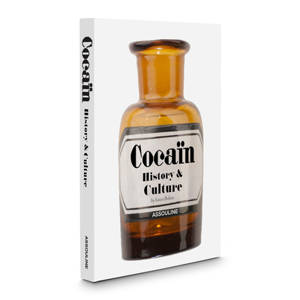
- Afhalen na 1 uur in een winkel met voorraad
- Gratis thuislevering in België vanaf € 30
- Ruim aanbod met 7 miljoen producten
- Afhalen na 1 uur in een winkel met voorraad
- Gratis thuislevering in België vanaf € 30
- Ruim aanbod met 7 miljoen producten
Zoeken
Omschrijving
In the popular imagination, cocaine appeared sometime in the 1970s, seemingly out of nowhere, as the ne plus ultra party drug for the disco generation; shortly thereafter, its destructive effects became impossible to ignore. But in fact, cocaine's history of addiction dates back to the nineteenth century, when it was legal and sold over the counter to treat ailments ranging from stomachaches to cramps to teething pain in babies.
For millennia before that, however, the unprocessed coca leaf had been essential to the development of indigenous South American cultures. How did the sacred plant of the Incas become the addictive white powder that held in its grip--and nearly destroyed--prominent figures like Sigmund Freud and Sir Arthur Conan Doyle, among countless others? And how did it get to wield the corrosive power depicted in films and television series such as Scarface and Narcos? This book tells that story.
For millennia before that, however, the unprocessed coca leaf had been essential to the development of indigenous South American cultures. How did the sacred plant of the Incas become the addictive white powder that held in its grip--and nearly destroyed--prominent figures like Sigmund Freud and Sir Arthur Conan Doyle, among countless others? And how did it get to wield the corrosive power depicted in films and television series such as Scarface and Narcos? This book tells that story.
Specificaties
Betrokkenen
- Auteur(s):
- Uitgeverij:
Inhoud
- Aantal bladzijden:
- 184
- Taal:
- Engels
Eigenschappen
- Productcode (EAN):
- 9781614287551
- Verschijningsdatum:
- 20/10/2018
- Uitvoering:
- Hardcover
- Formaat:
- Genaaid
- Afmetingen:
- 193 mm x 277 mm
- Gewicht:
- 861 g

Alleen bij Standaard Boekhandel
+ 106 punten op je klantenkaart van Standaard Boekhandel
Beoordelingen
We publiceren alleen reviews die voldoen aan de voorwaarden voor reviews. Bekijk onze voorwaarden voor reviews.











